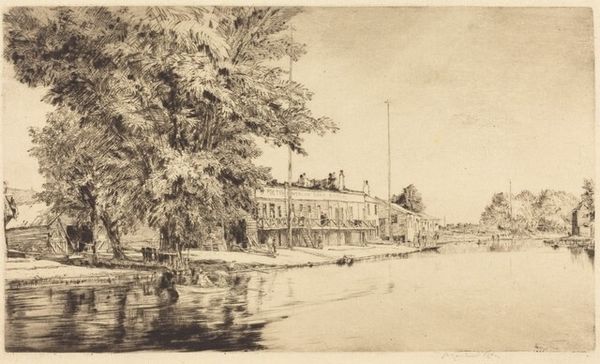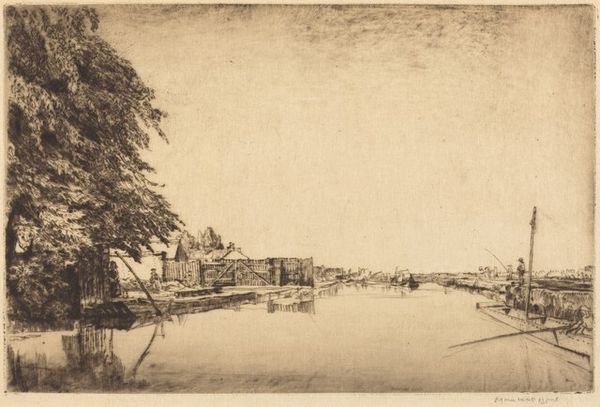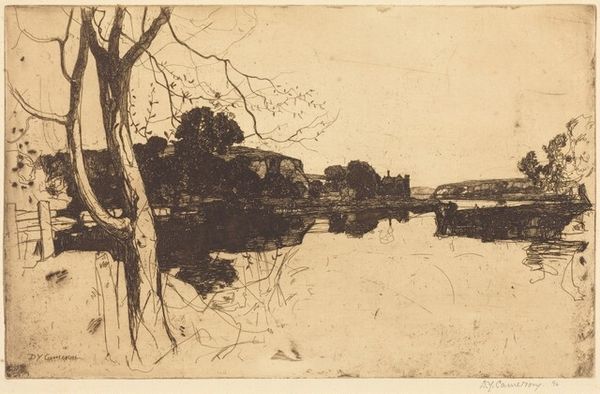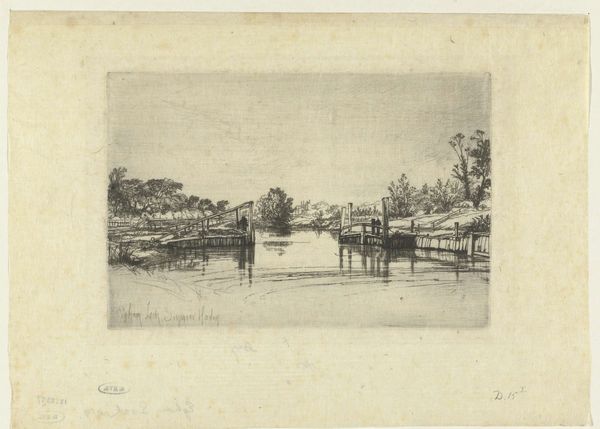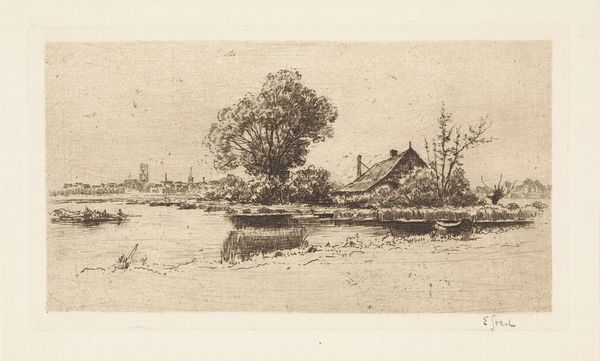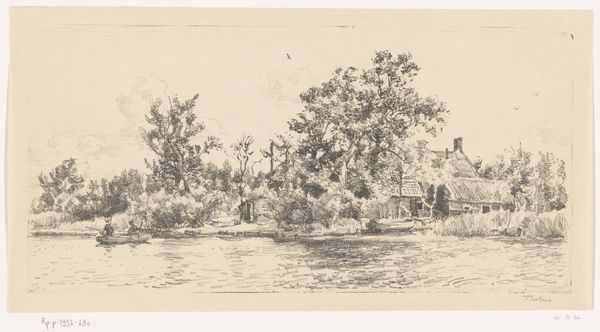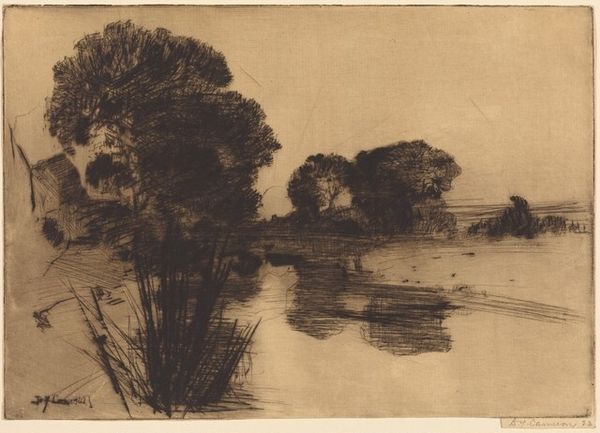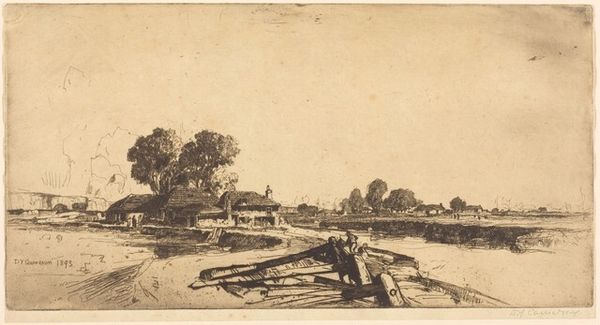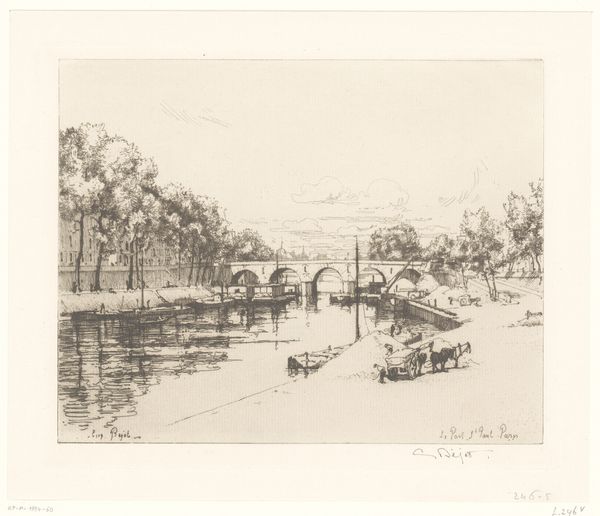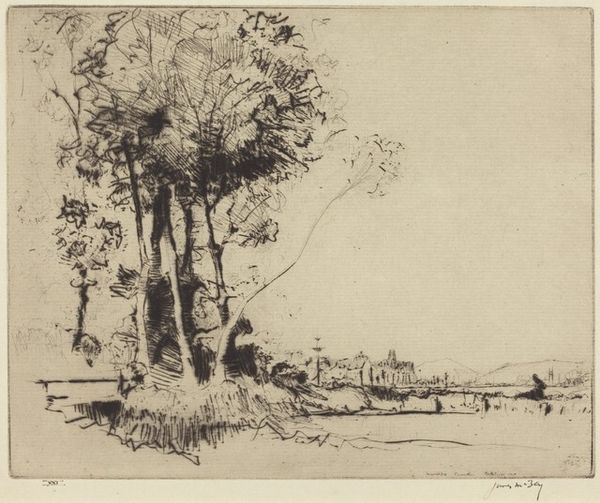
Copyright: National Gallery of Art: CC0 1.0
Curator: David Young Cameron's etching, "Laleham," created in 1901, offers a fascinating view into the artistic trends of the time. Editor: It's quite somber, isn't it? The monochromatic palette and dense clusters of lines create a really melancholic feel. Curator: Absolutely. The starkness serves a purpose, channeling late 19th-century anxieties about industrialization and the changing rural landscape. The trees become almost looming figures. What sort of materials or practices might reflect such anxieties? Editor: Well, as an etching, "Laleham" is mechanically reproduced. This highlights a departure from unique handcrafted artworks while using old-fashioned techniques to depict a pastoral scene—note the shadows, built through tiny etched lines, seemingly by hand, yet originating from a printing press. It underscores a tension between craft and the burgeoning world of mechanized production. Curator: Indeed. Furthermore, Cameron’s precise, almost architectural lines evoke a sense of order disrupted. Consider how the lone tree, contrasted against the flat water and land, gains emotional weight within that disruption. Is that landscape wild or carefully manufactured? Editor: That balance is key. And Cameron doesn’t shy away from texture. See the way he works the foreground, almost as if he were digging into the copper plate to create these rough surfaces that look very different from those trees reflected in the water. Curator: You’re spot on; the water mirrors both reality and an idealized past. The reflections hint at tranquility, a visual echo of the idyllic rural life threatened by modernization. Editor: Looking closely, it also reminds us how accessible prints were, or at least, could be, thanks to relative affordability, to working-class households; even as those populations found their rural economies devastated. Curator: Precisely. “Laleham" invites reflection on our relationship with progress, tradition, and the symbols we project onto the natural world. Editor: And to examine how printmaking serves both commerce and, in this case, as a lens for mourning.
Comments
No comments
Be the first to comment and join the conversation on the ultimate creative platform.
